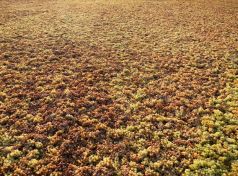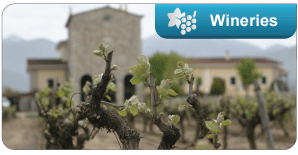Production of Vinsanto
Once the grapes destined for the production of Vinsanto have been harvested in late August, they are laid out to dry under the hot Aegean sun—or made into “liasta,” sun-dried grapes—protected from rotting by the capacity of Santorini’s soil for self-drainage. 8-12 days later, the grapes have lost a considerable amount of their water and each precious fiber of their characteristics has been concentrated. The process is long and costly but indispensable in the production of Vinsanto, the sweet “vin liastos” of PDO Santorini.
The native varieties employed in the production of Vinsanto are all white, and each contributes its unique characteristics to Vinsanto’s grandeur: Assyrtiko provides its intense acidity, nobility, and mineral notes; Aidani contributes to its body and profound, intoxicating aroma; Athiri lends a hand to the finesse and vulnerability of its character; and all together, these native, white grape varieties engage to shape Vinsanto’s complexity. The spectacular result is nothing less than what would be expected of grapes planted in one of the most ancient vineyards of the world! It is a vineyard that is a veritable monument of cultural and wine heritage, a vineyard that, due to the soil’s lack of clay and absence of organic matter, has never suffered the onslaught of phylloxera, a pest that loathes volcanic soils.
Vinsanto’s vinification, an arduous task due to the high content of sugars, is followed by a usually long period of ageing in barrels. In order to maintain the taste of the unique terroir, vintners rarely use barrels made of new wood, opting instead for barrels that are old and huge. The benefit of the scarce oxygen within calms down Vinsanto’s “unruly” character and concentrates its characteristics even further, all the while imbuing its taste with a marvelously velvety sense, making oaking an indispensable part of the production of Vinsanto. Quite often, Vinsanto is aged in excess of 40 years, and the resulting impact on the wine’s style is a beauty that can be appreciated by all wine lovers.
Production of Vinsanto requires, for each gallon produced, between 49-84 pounds of grapes due to the evaporation that takes place during the long period of ageing. The resulting rarity of Vinsanto serves only to enhance how precious and “divine” it truly is.



